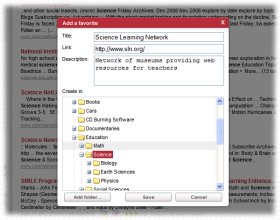|
Education
Web
Viewing 1-3 of 3 total results
Explanations and Examples Students are expected to: PO 3. Construct simple vertex-edge graphs from simple pictures or maps. Connections: M02-S2C4-02 M02-S5C2-04. Represent a problem situation using any combination of words, numbers, pictures, physical objects, or symbols. Students are int...
1
0
Explanations and Examples Students are expected to: PO 3. Construct simple vertex-edge graphs from simple pictures or maps. Connections: M02-S2C4-02 M02-S5C2-04. Represent a problem situation using any combination of words, numbers, pictures, physical objects, or symbols. Students are introduced to the connection between coloring pictures/maps and vertex-edge graphs. This introduction will lead to using vertex-edge graphs to solve problems (conflict resolution, shortest path, minimum spanning tree
18
0
http://www.ade.state.az.us/standards/math/Articulated08/Gradeleveldocs/MathGrade2.pdf#page=18
www.ade.state.az.us/standards/math/Articulated08/Gradeleveldocs/MathGrade...
Explanations and Examples Students are expected to: PO 3. Construct simple vertex-edge graphs from simple pictures or <span class="highlight">maps</span>. Connections: M02-S2C4-02 M02-S5C2-04. Represent a problem situation using any combination of words, numbers, pictures, physical objects, or symbols. Students are introduced to the connection between coloring pictures/<span class="highlight">maps</span> and vertex-edge graphs. This introduction will lead to using vertex-edge graphs to solve problems (conflict resolution, shortest path, minimum spanning tree
reliable algorithm for multiplying multi-digit numbers and dividing numbers by a single-digit divisor accurately and efficiently. #0;9 0406.2.5 Understand that division by zero is undefined. #0;9 0406.2.6 Divide three-digit whole numbers by one-digit divisors fluently with pencil and p...
1
0
reliable algorithm for multiplying multi-digit numbers and dividing numbers by a single-digit divisor accurately and efficiently. #0;9 0406.2.5 Understand that division by zero is undefined. #0;9 0406.2.6 Divide three-digit whole numbers by one-digit divisors fluently with pencil and paper. #0;9 0406.2.7 Identify factors of whole numbers and model factors and products beyond basic multiplication facts using arrays and area models. #0;9 0406.2.8 Generate equivalent forms of whole numbers, decimals, and common
2
0
http://www.state.tn.us/education/ci/math/doc/MA_Grade_4.pdf#page=2
www.state.tn.us/education/ci/math/doc/MA_Grade_4.pdf#page=2
reliable <span class="highlight">algorithm</span> <span class="highlight">for</span> multiplying multi-digit numbers and dividing numbers by a single-digit divisor accurately and efficiently. #0;9 0406.2.5 Understand that division by zero is undefined. #0;9 0406.2.6 Divide three-digit whole numbers by one-digit divisors fluently with pencil and paper. #0;9 0406.2.7 Identify factors of whole numbers and model factors and products beyond basic multiplication facts using arrays and area models. #0;9 0406.2.8 Generate equivalent forms of whole numbers, decimals, and common
numbers to 110; compare using phrases such as “same as”, “more than”, “greater than”, “fewer than”; use = symbol. Arrange small sets of numbers in increasing or decreasing order, e.g., write the following from smallest to largest: 21, 16, 35, 8. N.ME....
1
0
numbers to 110; compare using phrases such as “same as”, “more than”, “greater than”, “fewer than”; use = symbol. Arrange small sets of numbers in increasing or decreasing order, e.g., write the following from smallest to largest: 21, 16, 35, 8. N.ME.01.04 Identify one more than, one less than, 10 more than, and 10 less than for any number up to 100. N.ME.01.05 Understand that a number to the right of another number on the number line is bigger and that a number to the left is smaller. N.ME.01.06 Count
10
0
http://www.michigan.gov/documents/MathGLCE_140486_7.pdf#page=10
www.michigan.gov/documents/MathGLCE_140486_7.pdf#page=10
numbers to 110; compare using phrases such as “same as”, “more than”, “greater than”, “fewer than”; use = symbol. Arrange small sets of numbers in increasing or decreasing order, e.g., write the following from smallest to largest: 21, 16, 35, 8. N.ME.01.04 Identify one more than, one less than, 10 more than, and 10 less than <span class="highlight">for</span> any number up to 100. N.ME.01.05 Understand that a number to the right of another number on the number <span class="highlight">line</span> is bigger and that a number to the left is smaller. N.ME.01.06 Count
24
0
http://www.michigan.gov/documents/MathGLCE_140486_7.pdf#page=24
www.michigan.gov/documents/MathGLCE_140486_7.pdf#page=24
Multiply fluently any whole number by a one-digit number and a three-digit number by a two-digit number; <span class="highlight">for</span> a two-digit by one-digit multiplication use distributive property to develop meaning <span class="highlight">for</span> the <span class="highlight">algorithm</span>. N.FL.04.11 Divide numbers up to four-digits by one-digit numbers and by 10. N.FL.04.12 Find the value of the unknowns in equations such as a ÷ 10 = 25; 125 ÷ b = 25.* N.MR.04.13 Use the relationship between multiplication and division to simplify computations and check results. N.MR.04.14
|
